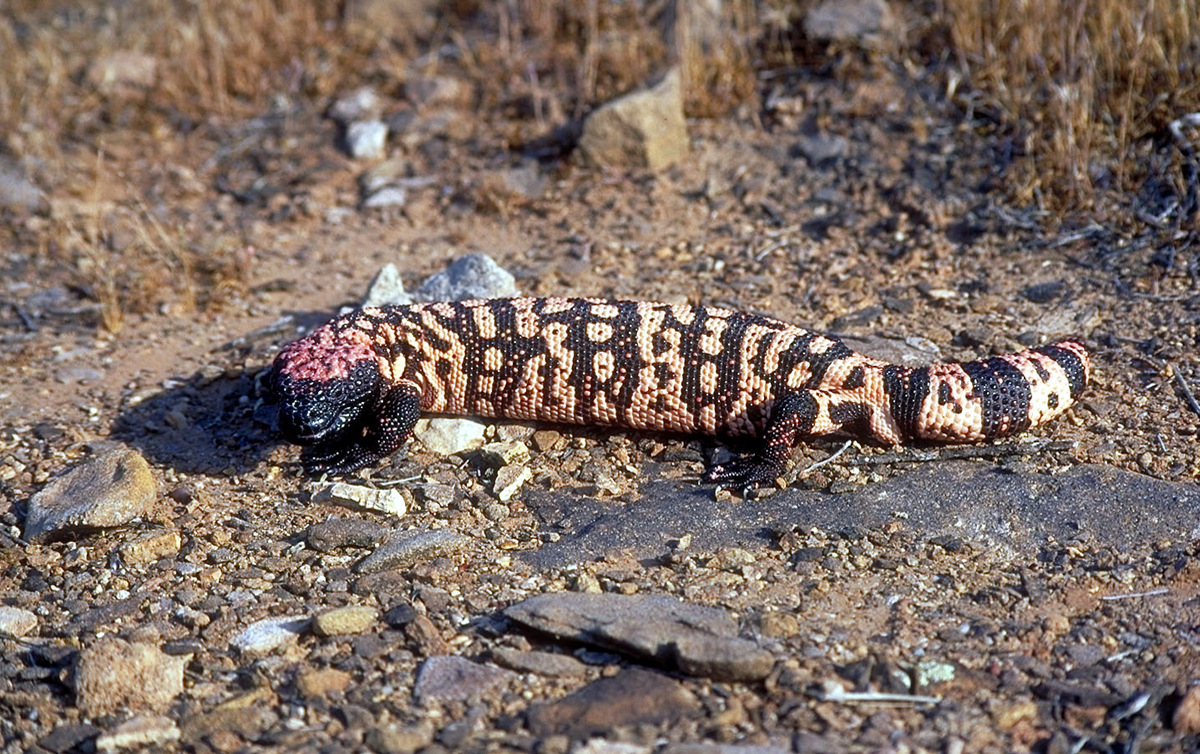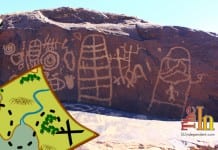
Gila monster officially named Utah’s state reptile
By Faith Jolley
Utah has long had a state flag, a state emblem, and even a state cooking pot (the Dutch oven). Now, with the March 27 signing of HB144, Utah officially has a state reptile: the Gila monster.
Here are some facts about Gila monster.
Gila monsters are primarily located in west-central Arizona but are also native to southwestern Utah, Nevada, New Mexico, and parts of California. The Gila River in New Mexico is the namesake for the species.
Snow Canyon State Park, designated trails in the Red Cliffs Reserve, and the BLM Red Cliffs recreation area are the most likely places to see a Gila monster in Utah. People are most likely to see them during the day in April and May, but they may also be seen through June, July, and August, especially on warm summer nights.
The large, heavy-bodied lizards primarily eat tortoise and bird eggs as well as baby cottontail rabbits and other small mammals that can’t move quickly. Gila monsters can eat up to 33 percent of their body weight in a single meal, and it digests slowly, so they only eat three or four times a year. As a result, they spend 95 percent of their time out of sight in burrows and below ground while their food digests.
Gila monsters typically live up to 25 years, and some in captivity have been recorded to live as long as 38 years. While they are not a federally endangered species, Gila monsters are protected in each of the states where they live, and it is illegal to capture or move a Gila monster found in the wild.
The lizards can range in color from yellow with black bands to orange or pink with black bands. Gila monsters can’t change their color during their lifetime, but generations of populations have changed color over time to better adapt and camouflage to their environment.
Gila monsters are one of two venomous lizard species in North America. However, because they are slow and underground the majority of their life, they aren’t a very large threat to people. No human deaths have been reported since the early 1930s, when according to folklore an intoxicated pool-hall operator allegedly died after poking his thumb into the mouth of a Gila monster. But, Utah Division of Wildlife Resources officials said the claim was never confirmed.
While fatal in large doses, the venom also has some remarkable medicinal properties. Researchers in the 1980s captured a Gila monster and made some amazing discoveries when they extracted its venom. A peptide called exendin-4 was discovered from Gila monster venom samples that originated in southwestern Utah. It has now become a leading new drug for treating Type 2 diabetes. The drug, now known as Exenatide, can be synthesized in a laboratory, and it’s no longer necessary to extract exendin-4 from Gila monsters.
If you do get lucky enough to see a Gila monster in the wild, do not attempt to grab or touch one. They are slow animals and are harmless when left alone.
Bites are very rare and are usually the result of harassing the reptile. If you do happen to be bitten by a Gila monster, here’s what to do:
—Remain calm.
—If necessary, remove the Gila monster using a sturdy lever to pry open the jaws.
—Immediately transport the bitten individual to a medical facility.
—Remove jewelry, watches, and restrictive clothing from the affected limb.
Because sightings of the reptiles are so rare, people should report when and where they see Gila monsters to the DWR. People can email photos and descriptions of where they saw a Gila monster to DWR biologist Ann McLuckie at annmcluckie@utah.gov, or they can report the sighting by calling (435) 879-8694.
Articles related to “Gila monster officially named Utah’s state reptile”
Utah Legislature approves three-year bachelor degree program at SUU
Art Adventures takes participants to Jimmie Jones home for plein air painting



